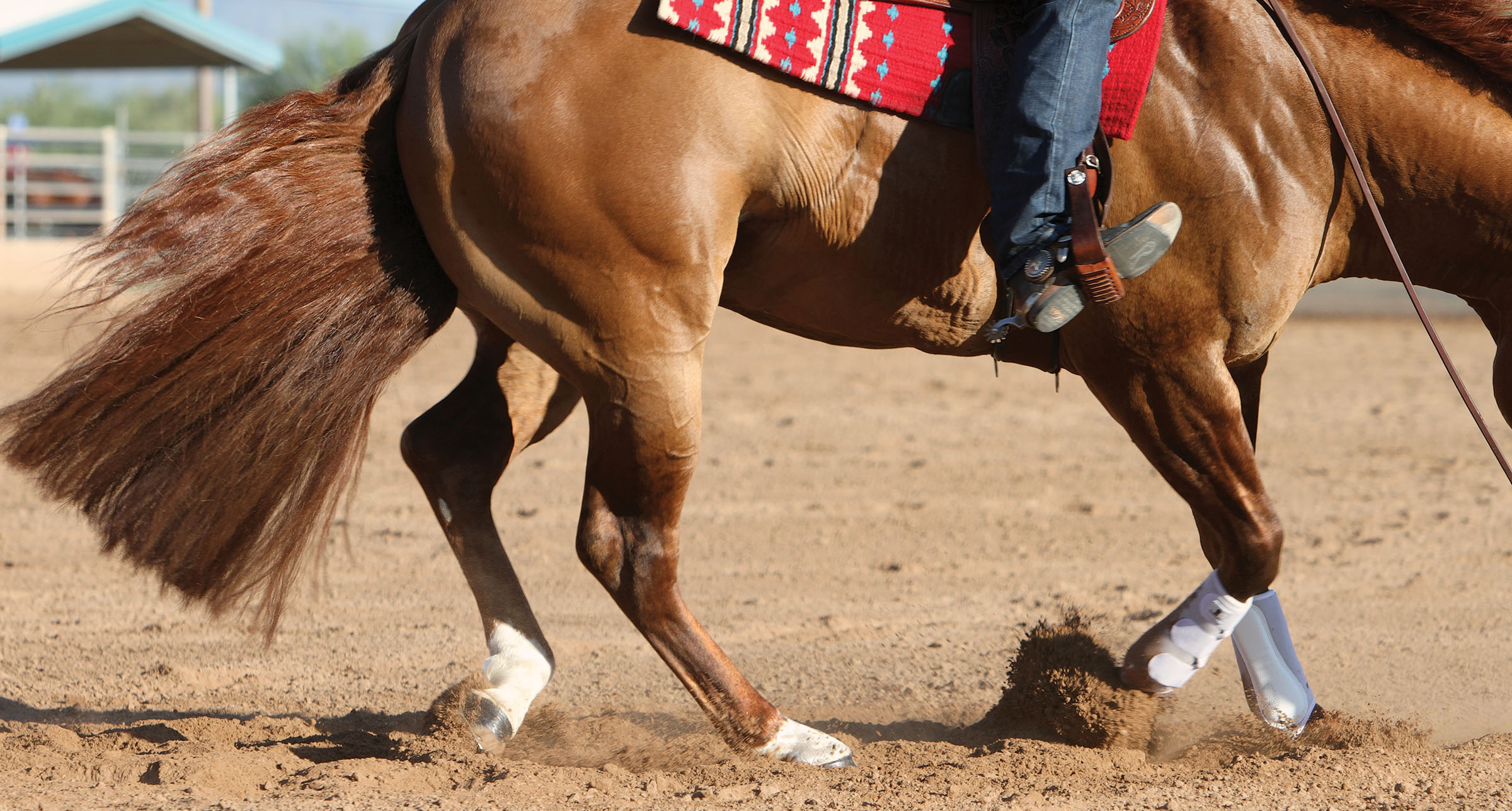
Creating and caring for a good riding surface are among the most challenging tasks of horse ownership. If you’re planning a new arena or refurbishing your existing one, the essential first step is to consult with experts (see box). They can tell you what types of footing are available, affordable, and recommended in your locale for the type of riding you do.
[READ ABOUT: Equine Lameness]
Also ask about your arena’s base. The best footing in the world won’t last or perform well if it’s not atop a firm, properly graded base that allows for drainage as necessary. Figure on 4 to 6 inches of base—stone dust, decomposed granite, or similar material that compacts under machine pressure.
For the footing, 2 to 4 inches atop the base is fairly standard. For the most active sports (cow horse, roping, barrel racing), the deeper footing may be best, while the shallower depths work for reining and other Western sports.
Who Ya Gonna Call? For advice on riding-arena footing, contact: your local agriculture extension specialist for general guidance and specialty publications; local horse trainers for what works best for the type of riding you (and they) do; your local quarry/dirt contractor for specifics on types of sand and dirt; riding-arena contractors for estimates on grading and other assistance; footing specialists for information on cost trade-offs and pricing on all types of arena materials, including commercial options.
Regarding the footing material itself, these are the most common options.
Sand. Arena-footing sand must be of the angular type rather than the rounded sand naturally found on beaches. (The latter provides too much “shear”—slipping out from under a hoof.) An industry standard is “C-33” sand, which has the correct mix of particle sizes for footing; finer sand will break down and become dusty more quickly. Quartz sand is especially hard and durable. A recent, high-tech innovation in footing is polymerized or wax-coated sand, a dust-free material that needs no water, won’t freeze, and provides excellent cushioning—all at a premium price.
Dirt/clay. Depending on where you live, your own native dirt may be usable if placed over a suitable base and groomed regularly—especially if mixed with sand. A dirt-sand mix is a favorite footing for many Western disciplines, as it provides the right amount of traction, rebound, and “slide” without the tendency to compact and harden common with straight dirt or clay.
Care of Your FootingYou’ll need equipment to keep your arena surface maintained (including an adequate watering system). Arena drags come in many varieties; the common chain harrow, for example, smooths the top level, while a rake with a profiling blade enables you to redistribute footing when necessary. Some drags can be pulled by a pickup or utility vehicle; others need a tractor with a three-point hitch. (Find “A Horse Owner’s Guide to Tractors” at HorseandRider.com.)
Stone dust, DG. Stone dust (stone screenings) is a byproduct of crushing stone; DG (decomposed granite) consists of very small pieces of natural granite. Though both will compact under pressure and are often used for an arena’s base, they may also serve as footing, especially when mixed with other materials, including sand. This is your least expensive option, but it does require meticulous maintenance to keep the surface from becoming hard and uneven over time.
Other materials. Wood products (shavings, chips, sawdust, etc.) can serve as footing alone or mixed with sand. Wood provides good cushioning and moisture retention, but needs to be kept watered or it breaks down and becomes dusty. Products made from rubber (recycled tires or industrial scrap rubber) or fiber (from burlap, cotton, or synthetic materials) are best used in combination with sand or stone dust. Some commercial products combine rubber and fibers to best effect, at a commensurate cost.






